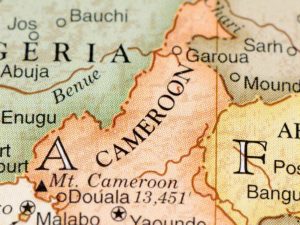Gridless acts as an anchor tenant and buyer of last resort for renewable energy produced by mini-grid projects in rural areas, thus driving down tariffs for communities.
The idea that Bitcoin mining can facilitate the development of renewable energy is counterintuitive at first. After all, the prevailing view in public discourse around Bitcoin mining is that it’s bad for the planet and has few redeeming qualities.
Gridless is an intriguing project because it presents the other side of the story on what Bitcoin mining can do. More importantly, the project presents its case in a simple way that is concrete and easy to grasp.
Based in Kenya, Gridless acts as a buyer of last resort for energy produced by renewable mini-grid energy generators in rural areas. In turn, Gridless uses this excess energy to run Bitcoin mining operations onsite, thus generating revenue to pay for the excess energy and driving down the tariff for the other users that draw power from the mini-grid.
We’ve been working with mini-grid hydro generators in Kenya on how to use their excess capacity for Bitcoin mining, which also significantly reduces the cost of power to the local community.
— Gridless (@GridlessCompute) October 5, 2022
Small <100kW sites now, working towards 500kW soon. pic.twitter.com/frhoHi9uR0
The Alliance for Rural Electrification estimates that roughly 600 million people lack access to electricity in Africa south of the Sahara. According to Gridless’ founder Erik Hersman, distributed power generation and mini-grids will play a central role in solving this power access issue.
Although Africa has abundant renewable energy capacity, efforts to bring it to the underserved run into problems because initially, the demand for power from those communities is not large enough to make the economics work. As Hersman puts it:
In short, it takes a few years for households to grow from getting electricity, to buying the refrigerators, TVs, and other appliances that use up more energy. The scale-up isn’t quick, which means that you need another buyer of that energy in the interim, or the costs to generate that power are going to be too high for that community to pay for as well, thereby slowing down the uptake even further.
Gridless acts as a load-balancer by using excess electricity, meaning the demand for power is predictable and a return on investment can be achieved on the project. As the community’s demand for electricity grows, Gridless decreases its mining activity accordingly or removes it entirely.
Alternatively, Gridless can also facilitate the building of additional capacity for a power project by once again playing the anchor customer role while waiting for the anticipated increase in community demand to materialise.
At scale, Gridless’ approach is also beneficial for the Bitcoin network. It increases the decentralisation of Bitcoin mining while also improving Africa’s representation in mining activity.
There is still a long way to go with regards to understanding the best ways to deal with Bitcoin’s energy demands. Nevertheless, when confronted with Gridless’ vision, it’s remarkable to consider that what first appears as a mere payment network is capable of facilitating such transformation.
If you enjoyed this article, consider subscribing to our weekly newsletter, where you can find more analysis on developments in the African crypto space.






